10 U.S. Cities Facing Alarming Heat Increases This Summer

If it feels hotter than usual, there’s a reason why, says CNN in a new report. “According to a new CNN study, the 50 most populated cities in the entire country have all gotten hotter over the past five decades. All of those other than three are experiencing more days classified as ‘extremely hot’ — meaning the temperature gets above 95 degrees in a day. That data was analyzed by the International Institute for Environment and Development and shared with CNN.” Here are the top 10 cities with the biggest rise in days 95°F or hotter this summer, according to CNN’s research—from tenth to the number one.
10. Charlotte, North Carolina
Days Above Average: +8.5

Charlotte, North Carolina, has seen a significant increase in the number of extremely hot days this summer. The city, known for its vibrant culture and growing population, is grappling with more days above 95 degrees than ever before. Residents have had to adapt to the sweltering conditions by staying indoors during peak heat hours and increasing their use of air conditioning.
9. Albuquerque, New Mexico
Days Above Average: +8.5
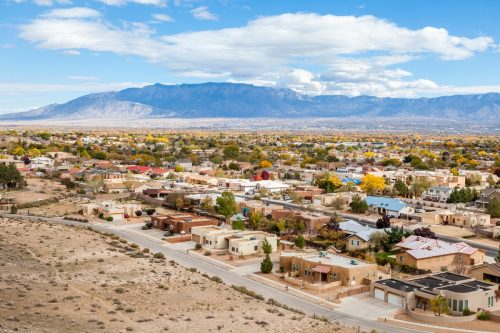
In Albuquerque, New Mexico, the summer heat has been relentless. The city, which is no stranger to high temperatures, has experienced an unusual number of days exceeding 95 degrees. This increase in extreme heat has led to heightened concerns about the health risks associated with prolonged exposure to high temperatures.
8. Raleigh, North Carolina
Days Above Average: +9

The city’s infrastructure is being tested as residents crank up their air conditioning to cope with the heat.
RELATED: Live in These 10 Places? You’re Most at Risk for “Extreme Winter Weather.”
7. Baltimore, Maryland
Days Above Average: +11.5
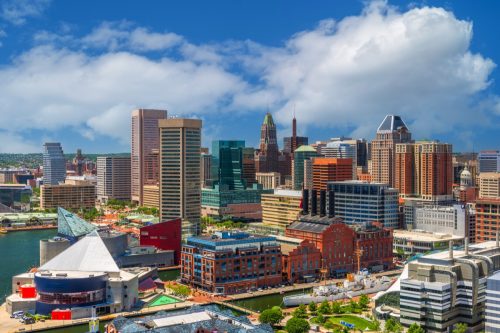
Baltimore, Maryland, has seen a dramatic increase in extremely hot days this summer. The city’s historic neighborhoods and bustling waterfront have not been spared from the rising temperatures. “With dangerous temperatures continuing to climb, the Code Red Extreme Heat Alert in Baltimore City has been extended,” says CBS News in July. “With the continuation of the current heat wave, an extension to the Code Red Extreme Heat Alert is vital for the safety and well-being of our residents and community,” said Baltimore Commissioner of Health Dr. Ihuoma Emenuga. “With temperatures and humidity levels expected to remain dangerously high, it’s crucial that we take extra precautions by drinking plenty of water, limiting outdoor activities, and remaining indoors with a working fan or air conditioner during this prolonged heat wave. Please take care of yourselves and check on your vulnerable neighbors.”
6. Washington, DC
Days Above Average: +11.5
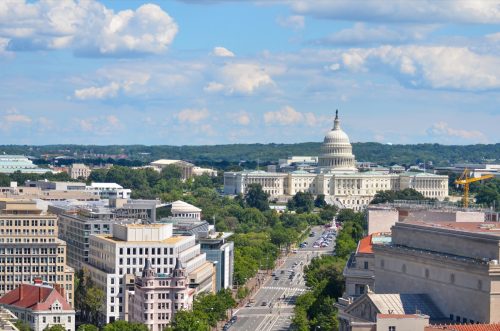
“Residents in Washington, D.C., have endured the most scorching three-day heat wave in nearly a century as extreme temperatures continue to scald the U.S. Northeast,” reported Newsweek last month. “Washington, D.C., was under an exceptional heat warning on Wednesday. The nation’s capital has battled dangerously hot temperatures all week, even breaking a record not seen since 1930.”
5. Atlanta, Georgia
Days Above Average: +12

“Georgia’s humidity, combined with temperatures reaching 90 degrees or above, can lead to heat illness outdoors or in areas without air conditioning, especially among children, older adults, or anyone physically exerting themselves,” reported Axios.
RELATED: 2024 Hurricane Season May Be 170% More Active—The States Most at Risk
4. Jacksonville, Florida
Days Above Average: +14
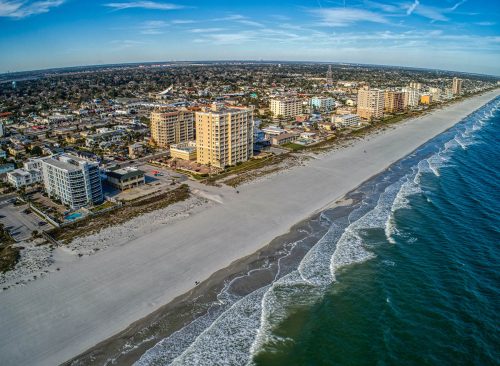
“Although high heat is not uncommon in any of these areas during the summer months, the fact that this heat wave is projected to be particularly long and intense and occurring so early in the season is particularly notable,” AccuWeather meteorologist Renee Duff said, according to My Journal-Courier.
3. Nashville, Tennessee
Days Above Average: +15.5
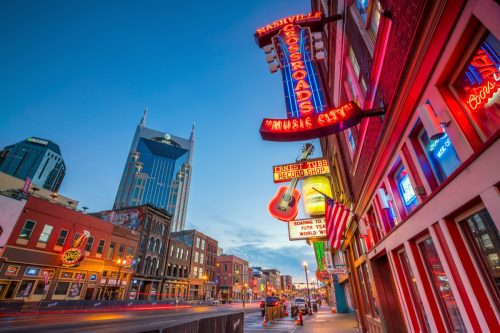
“New data shows heat waves are happening more often and lasting longer in Nashville and nationwide,” reports Axios. “ In Nashville, heat waves got nearly one day longer. On average, the number of heat waves in Nashville increased by three per year compared to the 1960s.”
2. San Antonio, Texas
Days Above Average: +15.5

Reports Texas Public Radio just last week: “While Thursday and Friday appeared to be the peak of a heat wave that has hit the city, temperatures are forecast to reach 100 through at least the middle of next week. A heat advisory was issued for San Antonians through at least 8 p.m. Friday due to high daytime temperatures. Precautions against the heat should be taken by outdoor workers, the elderly, the young, and those with chronic health conditions.”
1. Las Vegas, Nevada
Days Above Average: +17.5
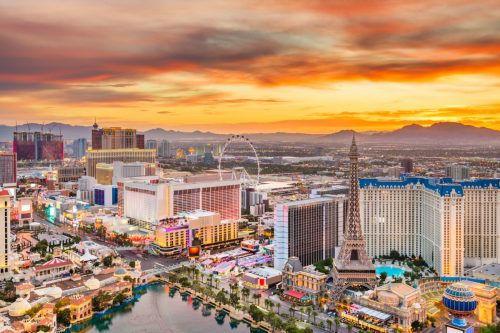
“The summer so far in Las Vegas has been scorching,” says CNN. “Every day in July was over 105 degrees, with the hottest day being 120 degrees,” “In July, Las Vegas recorded its hottest ever temperature at 120 degrees. Even more alarming: For three straight nights, the mercury never dipped below 94 degrees,” says the New York Times. The city’s “growth has translated to more roads, more cars, more houses — across a sprawling area — creating one of the most intense urban heat island effects in the United States. At night, the heat trapped inside asphalt and buildings exhales back into neighborhoods, making the city 20 to 25 degrees hotter than the surrounding desert.”
Stay Safe Out There
When temperatures reach around 95 degrees, staying safe is essential. Drink plenty of water and avoid alcohol and caffeine to stay hydrated. Wear light, loose-fitting, and light-colored clothing to keep cool. Limit outdoor activities during peak heat hours (10 a.m. to 4 p.m.), and take frequent breaks in the shade if you must be outside. Use broad-spectrum sunscreen with an SPF of at least 30. Keep cool indoors with fans or air conditioning, or visit public places like malls. Check on children, the elderly, and pets to ensure they are staying cool and hydrated. Recognize signs of heat illness, such as heavy sweating, weakness, dizziness, nausea, and headache, and seek medical attention if needed.